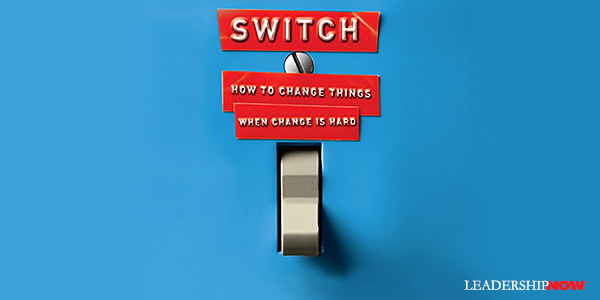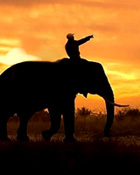 |
 |
07.14.10

Switch: How to Change Things When Change is Hard
IT IS NOT unusual for organizations (individuals) to fall short of the outcomes to which they aspired within the time allotted for that change. The biggest obstacle is getting people at all levels committed to the change. Commitment requires both hearts and minds. The problem is hearts and minds often have different agendas. “Logic only gives a man what he needs,” wrote Tom Robbins, “magic gives him what he wants.” Logic tells what we know to do; emotion is the magic that explains why we do what we do. Logic may direct, but emotion runs the show. Logic says what needs to be done. Emotion gets it done. The brothers Heath—Chip and Dan—explain in Switch why we must and how we get hearts and minds—emotion and logic—to work together.  It seems like the Elephant may be all bad: lazy, skittish, and seeks instant gratification over long-term gain. “Changes often fail because the Rider simply can’t keep the Elephant on the road long enough to reach the destination.” But the Rider has issues too: overanalyzing and over-thinking things, the tendency towards a problem-focus instead of a solution-focus, and the proclivity to complain than praise. We have to learn to deal with both. As leaders, we need to speak to both the Rider and the Elephant. They begin by illuminating three key observations about change that lead us to three things we must do to make change happen: First, what looks like a problem is often a situation problem. We often overlook the situational forces that shape our and other people’s behavior. There are things we can do to make the change easier and remove some of the friction. We can shape the Path. When it comes to changing behaviors, “environmental tweaks beat self-control every time.” Second, what looks like laziness is often exhaustion. Self-control is an exhaustible resource. They explain, “When people try to change things, they’re usually tinkering with behaviors that have become automatic, and changing those behaviors requires careful supervision by the Rider. The bigger the change you’re suggesting, the more it will sap people’s self-control. And when people exhaust their self-control, what they’re exhausting are the mental muscles needed to think creatively, to focus, to inhibit their impulses, and to persist in the face of frustration or failure. In other words, they’re exhausting precisely the mental muscles needed to make be change.” We need to motivate the Elephant. Third, what looks like resistance is often a lack of clarity. The Rider is “a navel-gazer, an analyzer, a wheel-spinner. If the Rider isn’t sure exactly what direction to go, he tends to lead the Elephant in circles.” Often we state outcomes with little mention of what exactly you want people to do. What exactly does that outcome mean in terms of what I should do now? What do you want me to do this minute? Speak to the solution. We need to direct the Rider. Trying to understand why people don’t change or aren’t supporting your change isn’t always easy. “Is it because they don’t understand or because they’re not enthused? Do you need an Elephant appeal or a Rider appeal?” “Trying to fight inertia and indifference with analytical arguments is like tossing a fire extinguisher to someone who’s drowning. The solution doesn’t match the problem.” The brothers Heath uncover methods and thinking to help you to direct the Rider, Motivate the Elephant and Shape the Path. Their memorable examples and research findings clearly illuminate the methodology. The insights will resonate with you and hopefully change your approach to change and make it easier. Switch is an important [required] book for anyone wanting to understand change and constructively deal with the issues we confront when staring down the need to make a change. Read it, grow, and deliver. 
Posted by Michael McKinney at 11:06 AM
|
BUILD YOUR KNOWLEDGE
 

How to Do Your Start-Up Right STRAIGHT TALK FOR START-UPS 
Grow Your Leadership Skills NEW AND UPCOMING LEADERSHIP BOOKS 
Leadership Minute BITE-SIZE CONCEPTS YOU CAN CHEW ON 
Classic Leadership Books BOOKS TO READ BEFORE YOU LEAD |